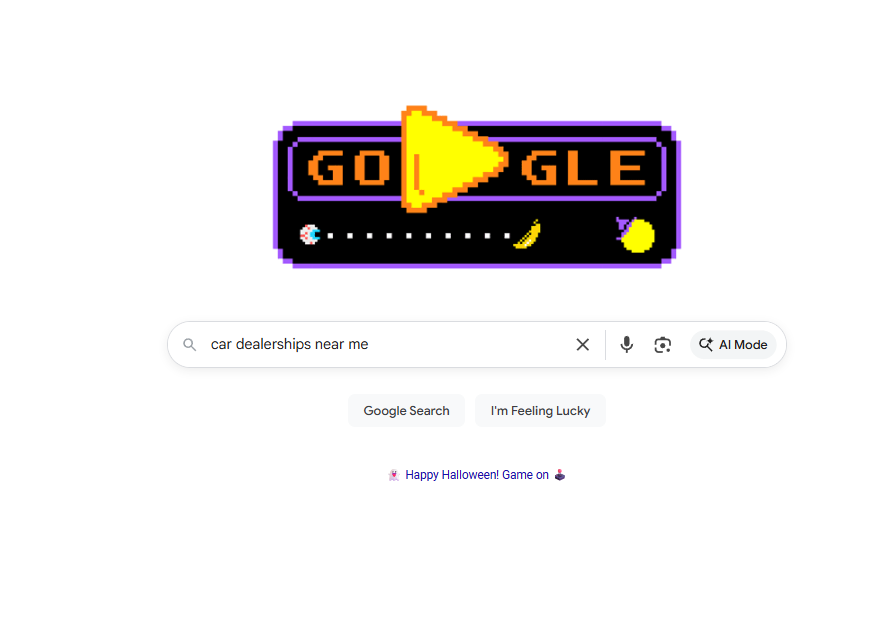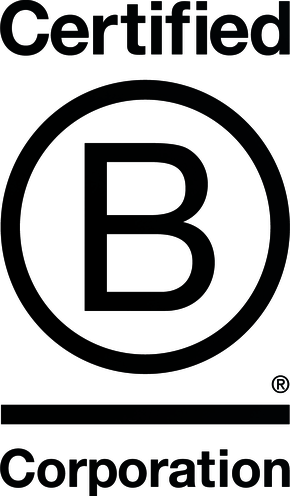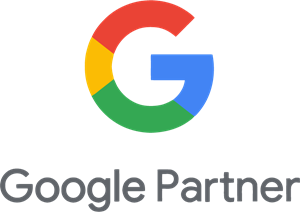If you operate a car dealership, you’re competing in one of the most challenging local search environments. Potential buyers are researching vehicles on their phones, comparing prices across dealerships, and making purchase decisions before they ever visit your lot. How do you ensure they find your inventory first? The answer lies in a specialized Car Dealership SEO strategy built by professionals who understand the unique complexities of automotive search, from VIN-level optimization to map pack dominance. Here’s everything you need to rank #1 in your market and turn online searchers into showroom visitors.
Understanding Auto Dealership SEO
Whether you’re a single-location dealer or a multi-rooftop group, the right SEO strategy means the difference between being invisible and dominating local search. Car buyers research models, compare prices, and read reviews online long before making a purchase. Without proper optimization, your inventory sits unseen while competitors capture high-intent shoppers. Auto Dealership SEO ensures your vehicles, offers, and services appear exactly when and where local buyers are searching.
Defining Car Dealership SEO: The Essentials
Car Dealership SEO is the practice of optimizing an automotive dealership’s digital presence to dominate GEO search results so that local shoppers easily find your vehicles, services, and offers online. Unlike generic SEO, it focuses heavily on local intent, and that means encouraging actions such as getting directions, calling, or visiting the store through Google Maps or Search.
Effective automotive SEO ensures your Search (Inventory) Results Pages (SRPs) and Vehicle Detail Pages (VDPs) are visible when people search for in-stock inventory. Your Google Business Profile (GBP) acts as a convenient direct conversion surface, where prospects tap “Call,” “Directions,” or “Website” right from the search results.
When executed well, SEO guides buyers seamlessly through the journey from search to SRP, then VDP, then a lead, then a test drive.
How Dealership SEO Differs from General SEO
SEO for car dealers requires specialized strategies that go beyond traditional keyword optimization, because automotive sites have constantly changing inventory, VIN-specific content, and a strong dependence on map pack visibility and review quality. In short, auto dealer SEO is far more complicated than more standard SEO efforts, and requires additional knowledge of the subtlety involved in converting a looker into a buyer within the automotive industry.
Some of the key differences include:
- Inventory volatility: Pages are created and removed daily as vehicles arrive or sell.
- VIN-level optimization: Each vehicle has unique identifiers and attributes that must be indexed properly.
- Map pack prominence: Local three-pack listings often generate most conversions.
- Review signals: Ratings and response activity directly influence both rank and buyer trust.
- Schema requirements: Structured data for Vehicle, LocalBusiness, and Product helps Google understand inventory.
As an example, a typical general SEO campaign might focus on building a blog hub around topics like “Best Cars for College Students.” In contrast, a dealership SEO strategy creates interconnected hubs that link model pages, filtered SRPs, and individual VDPs to ensure every in-stock vehicle is discoverable and conversion-optimized with relevant keywords placed naturally across key web pages.
Key Differences: General SEO vs. Dealership SEO
Category | General SEO | Dealership SEO | Example / Notes |
Primary Page Types | Blog hubs, pillar pages | SRP/VDP hubs + Service pages + GBP | Treat SRP/VDP as conversion pages (test drive, finance). |
Freshness driver | Occasional content updates | Inventory volatility (daily adds/removals) | Auto-update sitemaps when stock changes. |
Conversion events | Form fills, downloads | Calls, directions, test drives, finance pre-approvals | Track as primary KPIs. |
Local pack impact | Helpful, not core | Core (calls/directions dominate) | Optimize GBP and reviews continuously. |
Schema | Article, FAQ, HowTo | Vehicle/Product, LocalBusiness, Breadcrumb, FAQ | VIN-level data on VDPs. |
Crawl controls | Standard categories/tags | Param/Facet control; canonical SRPs; noindex explosive combos | Document parameter rules. |
Content hubs | Blog → service pages | Make/Model hubs → SRPs → VDPs | Research content must link into inventory. |
Review signals | Nice to have | Critical (volume, velocity, recency) | Build post-sale/service review engine. |
Geo Search Focus | National/broad targeting | Hyper-local, city-specific GEO search optimization | Target “[brand] dealer [City]” + “used cars near me”; city pages, map/directions, localized CTAs, consistent NAP. |
Why SEO Matters for Dealerships
Strong automotive SEO is one of the best ways to drive measurable business outcomes. With more high-intent shoppers on your site, you’ll experience increased calls and directions from GBP as well as higher close rates from qualified leads. Here are three of the primary benefits you can expect, based on industry trends.
1. Drives Targeted Traffic to Inventory
Local searchers often know exactly what they want, and they’re close to purchase. They’ve already spent time looking around at the kinds of vehicles they like, thinking about their budget, and studying details like safety features. With the right dealership SEO, you can ensure your SRPs and VDPs appear when potential buyers search for nearby inventory during local searches as customers search online.
Queries like “used Toyota Camry near me” or “Ford F-150 in stock [city]” drive ready-to-buy traffic, and optimized SRPs filter by model, price, and mileage for faster conversions. Additionally, each VDP should make it easy to call, text, or schedule a test drive instantly. The easier it is for buyers to find you and see what you have to offer, the more likely they are to contact you instead of moving on to your competition.
2. Boosts Local Visibility and Brand Preference
Google’s map pack is the new digital forecourt, and when shoppers search “car dealerships near me,” the top three listings dominate engagement. To maximize that value for your dealership, you’ll want to optimize your Google Business Profile with consistent NAP (Name, Address, Phone) and high review ratings to influence local share and improve online visibility across search engines.
Not only that, but you can also use local SEO to drive both branded (your dealership name) and non-branded (e.g., “used SUV dealer [city]”) visibility, and your presence in Maps establishes trust before a customer ever visits your site.
3. Builds Trust and Conversion
SEO isn’t just about rankings. It’s also about credibility. When you have transparent pricing, authentic reviews, and clear service information you can foster trust and help improve your conversion rates through data-led search engine optimization that search engines understand.
Another way to make conversion easier and more convenient for potential buyers is to add sticky CTAs to your VDPs. “Call,” “Directions,” and “Check Availability” all help reduce friction and boost conversions. The goal is to give your buyer a seamless experience that’s easy for them to navigate, so they find the vehicle they want before they ever set foot in your dealership.

Know Your Car-Buyer Types First
Different shoppers have different needs, and understanding buyer intent helps you design content and SEO strategies that meet them where they are. Consider these personas and journey maps as ideas to build from, so you can target the right people with the kinds of information and guidance they’re looking for.
“Now Buyer Nate” (Needs a Car This Week)
- Queries: “used car dealer near me,” “in stock [model] [city],” “open now.”
- Needs: Hours, phone, directions, price, and immediate availability.
- SEO Focus: Optimized GBP, SRP filters for “in stock,” and visible CTAs.
“Researcher Riley” (Comparing Models and Ownership Costs)
- Queries: “[model] trim comparison,” “towing capacity [model],” “lease vs. finance [brand].”
- Needs: Model pages, comparisons, financing guides.
- SEO Focus: Internal links from research pages to SRPs to VDPs to keep buyers in-funnel.
“Service Sam” (Service and Parts Revenue Engine)
- Queries: “oil change [city],” “OEM parts near me,” “brake service [brand].”
- Needs: Transparent pricing, coupons, online booking.
- SEO Focus: Optimized service pages with local offers and review schema.
Simple Journey Maps
Journey maps don’t need to be difficult or complex, and the goal is to be clear on where a buyer comes in and where they’re headed next, for both the sales and service journeys you may see at your dealership.
Sales Journey:
- Map Pack
- SRP
- VDP
- Lead
- Test Drive
Service Journey:
- Service Query
- Service Page
- Offer/Coupon
- Booking
- Appointment Reminder
Understand Search Intent to Align with Local Demand
Every search has intent, and knowing which kind informs the content and CTA you offer. There are four basic types of intent to consider when it comes to potential buyers. Meeting them where they are and providing them with SEO-based content that speaks to their current needs maximizes the value they’re getting and improves online visibility across search engine results pages. That helps bring them to your dealership over other dealerships in the area.
The 4 Search Intent Types
Informational:
- Examples: “CPO vs used [brand],” “best family SUV [city].”
- Content: Comparison guides, buyer education.
- CTA: Browse inventory.
Navigational:
- Examples: “[Dealership Name] reviews,” “[Brand] dealer [city].”
- Content: About page, testimonials, photos.
- CTA: Directions or call.
Transactional:
- Examples: “used car dealer near me,” “schedule test drive [model].”
- Content: SRPs and VDPs.
- CTA: Test drive or financing application.
Commercial:
- Examples: “[model] lease deals [city].”
- Content: Offer pages, financing deals.
- CTA: Check eligibility or get a quote.
Content Cluster Framework
Modern Auto dealer SEO uses a “hub and spoke” architecture that connects high-value content (hubs) with related SRPs, VDPs, and city pages so search engines understand topical relevance across your web pages and reward comprehensive hubs with stronger search rankings and more organic traffic. That helps ensure that potential buyers can make their way from one area to another without getting lost in the shuffle and giving up. The more easily shoppers and researchers can make their way around your site, the more likely it is they’ll find the information they want and see you as a trusted source.
Core Hubs to Categories to City/Neighborhood to Internal Links
There are four core hubs, which are:
- Sales Hub: New, Used, and CPO overviews; “Why Buy Here” content.
- Model/Make Hubs: Filtered SRPs leading to VDPs.
- Service Hub: Service types (oil, brakes, tires) to city service pages to booking forms.
- Local Hub: City/area pages highlighting nearby inventory.
It should be easy and efficient for someone shopping for a car to move from your home page to research, then to SRP, to VDP, and become a lead. If they’re not in the market for a vehicle and are looking for service, they need to be able to move from the main service page to an offer, to booking, and then to a reminder about their scheduled appointment.

Keyword Research Strategies for Auto Dealership SEO
Tools and Processes
To get started on dealership SEO, you can use Google Keyword Planner, Search Console, and site search logs to find terms people already use to find you alongside third-party keyword research tools. Then, expand the seed (basic or general) keywords with modifiers (city, “in stock,” “used,” “lease”), and map those terms to your page types (SRP, VDP, Service, City).
For the best value for your potential customers, prioritize your SEO efforts based on intent (transactional > informational) and conversion value. While too strong of a focus on selling vehicles can make shoppers feel that you aren’t interested in educating them, most of your SEO-focused content should be based on data and information that revolve around sales.
Long-Tail Opportunities
Long-tail keywords convert higher because they capture exact buyer needs. They’re much more specific than general automotive dealer SEO, and they can help you narrow down the details of what shoppers are really searching for when they find your dealership. Examples of long-tail keywords (which are also sometimes called key phrases) include:
- “best [model] trim for snow [city]”
- “used hybrid SUVs under $25k [city]”
- “same day test drive [model] [city]”
- “bad credit auto loans [brand] [city]”
- “lease buyout calculator [brand]”
- “certified pre-owned [model] with warranty [city]”
- “EV tax credit [state] 2025”
- “how to trade in a car with loan [city]”
High-Value Keyword Types
Group | Examples | Volume (Est.) | Competition |
Dealer Core | “car dealership [city]” | High | High |
Inventory | “used [brand] [model] [city]” | Medium | Medium |
Offers | “[model] lease deals [city]” | Medium | Medium |
Service/Parts | “oil change [city]” | High | Medium |
Near Me | “car dealer open now” | Medium | Medium |
Finance | “bad credit car loans [city]” | Low-Med | Low |
Optimizing Your Google Business Profile (GBP)
Your Google Business Profile is one of the most important aspects of your auto dealer SEO journey. If you don’t have a good profile or, worse yet, if your information is incorrect, you could find that potential buyers are avoiding you and turning to your competition instead. Here’s what you should check for on your profile, as well as what else to consider as you update and improve it.
GBP Essentials Checklist (Quick Reference)
Element | What to Include | Cadence | Owner |
Primary/Secondary Categories | e.g., Car Dealer, Used Car Dealer, Auto Repair Shop | Review quarterly | SEO Lead |
Services | Sales, Financing, Service types, Parts | Update with new services | Service Manager |
Products | Featured vehicles, service offers | Weekly (swap sold units) | Inventory/Marketing |
Hours & Special Hours | Regular + holidays | Before each holiday | Ops |
Attributes | Wheelchair accessible, Wi-Fi, etc. | Quarterly | Ops |
Business Description | 750 chars, unique value props | Semi-annual | Marketing |
Photos & Videos | Staff, lot, inventory, bays; short verticals | 3–5 new items/week | Marketing |
Links | Website + Appointment (booking/finance) with UTM | One-time + audit quarterly | SEO Lead |
Messaging / Calls | Enable if staffed | Ongoing | BDC |
Reviews | Ask post-sale/service; short replies | Daily monitoring | BDC/Service |
Review Generation Tactics
To get more reviews, you can create automated post-sale/service emails with direct links, as well as QR cards handed out at delivery. Also consider SMS requests after positive CSI feedback, email footer prompts with review request links, and in-store signage (“Love your experience? Leave a review!”).
You’ll want to show that you’re responsive to reviews, and creating templates that you can adjust and expand upon is a great way to do that. Use simple templates for the basics, such as:
- Positive: “Thanks, [Name]! We’re thrilled you enjoyed your [Model]. See you for your first service visit.”
- Neutral: “We appreciate the feedback, [Name]. Our team will reach out to learn more.”
- Negative: “We’re sorry we missed the mark, [Name]. Please contact [Manager] so we can make it right.”
NAP Consistency
NAP is short for Name, Address, Phone, and its consistency across all platforms builds Google’s confidence in your business. Common mistakes in your NAP might include abbreviations (“St.” vs “Street”), old phone numbers or service-only lines, and mismatched URLs between OEM directories and GBP. As a mini audit checklist, check your NAP on:
- Google, Bing, Apple Maps
- Yelp, Cars.com, Edmunds, AutoTrader
- Local Chamber of Commerce, BBB
- OEM Dealer Locator
On-Page SEO: Fine-Tuning Your Website
SEO-Friendly URLs and Navigation
Your URLs can help increase SEO for your dealership. Good examples include:
- SRP: /used/ford/f-150/san-diego/
- VDP: /used/ford/f-150/2022-xlt-1ftfw1e51nkf12345/
- Service: /service/oil-change/san-diego/
- City: /locations/san-diego/
Keep navigation shallow, with SRPs and VDPs within three clicks of home, so potential buyers don’t have to keep clicking through pages of information to find what they want to see.
Headers and Keyword Placement
Getting your keywords into the copy matters for Car Dealership SEO. Consider the following as you move through SEO planning and content creation.
- H1: Primary keyword (“Used Toyota Camry in Denver”)
- H2/H3: Variants (“Certified Camry Deals in Denver”)
Also, sprinkle synonyms in naturally to help avoid keyword stuffing.
Image SEO for Vehicles
For image SEO, choose the alt text pattern [Year] [Brand] [Model] [Trim] [Color], and compress images for faster load times. Keep your file naming consistent across all brands and vehicles, to make everything easier to find.
Build a Data-Backed Content Strategy
Awareness Stage
Content in this stage includes model comparisons (“Camry vs. Accord”), ownership cost guides, and other data, such as EV education (“Charging station map [city]”). Include a CTA to browse your inventory or schedule a test drive.
Consideration Stage
Here, you need items such as lease vs. finance guides, credit and trade-in education, and programmatic model hubs linking to SRPs/VDPs.
Decision and Trust Stage
At this stage, your content should include customer stories, delivery photos, transparent fee breakdowns, and warranty and reconditioning info.
Conversion-Focused Pages
For pages focused on converting online tire-kickers into vehicle buyers, the following checklists can get you on the right track.
SRP Checklist:
- Filters for model/year/price
- 50–100 words of unique copy
- Internal links to related VDPs
- Result count and trust badges
VDP Checklist:
- Price, mileage, VIN
- Photo gallery or 360 view
- Sticky CTAs (“Call,” “Text,” “Finance”)
- Similar vehicles section
- Transparent fees
Service CRO Checklist:
- Pricing table
- Coupons
- Booking widget
- Hours and tech bios
SEO Content Best Practices
Best practices matter. Be sure to add your primary keyword in H1 and variants in subheaders, along with internal links between SRPs, VDPs, and service pages. Then, add schema (Vehicle, FAQ, etc), and include the “Last Updated” date on major hubs.

Building a Robust Backlink Profile
Why Links Matter
High-quality local backlinks tell Google your dealership is relevant and reputable. To get these backlinks, consider reaching out to local OEM, schools, charities, chambers, and auto clubs, not spammy directories.
Link Building Strategies
For link building, evaluate the relevance, authority, and placement visibility. Then work with:
- Community sponsorships (youth sports, charity drives).
- Local scholarships or grant programs.
- Event recaps (EV demo days, safety clinics).
- “Best drives near [city]” blog guides.
- Local data studies (most popular vehicles).
- Media outreach for service tips.
- Dealer-to-dealer collaborations.
- Feature local partners (restaurants, repair shops).
- Submit to OEM-approved directories.
- Collaborate with local bloggers.
Local SEO Techniques to Dominate Your Market
Location-Specific Landing Pages
Each city page should be optimized for GEO search with an intro paragraph mentioning your service area, as well as an embedded map and directions. Also add in some local inventory highlights and a clear CTA (Call, Directions, or Browse Inventory).
Citations and Directories
For citations and directories, priority sources include Google, Bing, Apple Maps, Yelp, Cars.com, Edmunds, DealerRater, AutoTrader, CarGurus, BBB, local chambers, OEM directories, MerchantCircle, YellowPages, and MapQuest. Ensure you’re maintaining consistent NAP and UTM tags across all listings, and you’ll see better results from your SEO efforts and clearer attribution in Google Analytics and campaign synergy with Google Ads.
Mobile Optimization
Because so many of your prospective buyers are using mobile, make sure you have fast INP/LCP scores and a responsive layout, along with sticky “Call” and “Directions” buttons. You can test your dealership’s mobile site with tools like PageSpeed Insights, GTmetrix, and Bing’s Mobile Friendly Test Tool.
Technical SEO for Inventory Sites
On the technical side of things you want to ensure shoppers can find the inventory they’re looking for in several different ways. To do that, there are some specific areas you’ll want to address.
Crawl/Index Controls
- Canonicalize SRPs; prevent crawl traps from filter parameters.
- Noindex low-value combinations.
- Create pre-generated SRPs (e.g., “used SUVs [city]”).
- Document pagination and parameter handling rules.
Sitemaps and Freshness
- Maintain separate, main, and vehicles sitemaps.
- Update dynamically when inventory changes.
- Remove sold stock immediately.
Core Web Vitals
- Compress and lazy-load vehicle images.
- Defer non-critical JavaScript.
- Monitor INP for mobile performance.
Structured Data
- VDPs: Vehicle + Product schema
- Sitewide: Breadcrumbs
- FAQ pages: FAQ schema
- Contact page: LocalBusiness schema
Duplicate/Retired Inventory Handling
- Redirect sold VDPs to related SRPs.
- Return 410 Gone if permanent.
- Avoid duplicating VINs across microsites.
Measuring Your Auto SEO Success
Key SEO Metrics
To know if your Car Dealership SEO services are working you’ll want to tie metrics to actual business outcomes, such as calls, directions, and test drive bookings, as well as finance pre-approvals and SRP/VDP conversions. Additionally, consider looking at map pack share and review velocity, along with branded vs. non-branded search split. Then, target qualitative improvements month-over-month rather than from just raw traffic counts in your analytics from tools like Google Analytics.
Tools and Dashboard Essentials
Some of the best tools to use for information on your dealership’s SEO include:
- GA4 (user behavior, conversions)
- Google Search Console (query data)
- GBP Insights (calls, directions)
- Call tracking software
- Rank tracking tools
You can create dashboards showing SRP traffic to VDP engagement to conversion flow to get a better idea of successful areas and needed changes.
Your 12-Week Car Dealership SEO Implementation Plan
Ready to boost lot visits, test-drive bookings, and calls from local shoppers? This checklist turns dealership SEO into a clear, step-by-step plan. Each week focuses on high-impact tasks so you build momentum without getting overwhelmed.
Follow this plan to lay a strong SEO foundation, then keep rising with monthly habits that protect your map pack share and organic rankings. Download the checklist, tick the boxes as you go, and watch SRP/VDP views, qualified leads, and showroom traffic improve week after week.
[Download the complete checklist PDF here → Car Dealership SEO Master Checklist 2025]
Car Dealership SEO Master Checklist 2025

- Claim and verify GBP for Sales; add Service & Parts profiles if eligible
- Primary category: Car Dealer (add Used Car Dealer, Truck Dealer, Auto Repair Shop as relevant)
- Complete all fields (hours incl. service hours, phone, site URLs, attributes)
- Add UTM to website, appointment, and menu links\
- Upload 30+ high-quality lot, showroom, staff, and vehicle photos
- Write a 750-char description with city + brands carried
- Turn on messaging; set response prompts
- Add Products/Highlights (top models, financing offers)
- Enable vehicle listings / inventory sync if available
- Post first GBP update (offer, new arrival, event)

- SSL + core vitals (LCP <2.5s; mobile speed first)
- Sticky click-to-call and “Book Test Drive” buttons
- Clear, fast lead forms (test drive, ePrice, trade-in, finance)
- GA4 + GSC + conversions (calls, forms, chats, directions)
- Dynamic Number Insertion for call tracking
- LocalBusiness schema (Sales, Service, Parts as applicable)
- Location page(s) with map, parking, hours, and NAP
- XML sitemap(s) for SRP/VDP; submit in GSC
- Robots.txt reviewed; block thin/duplicate params
- Mobile-first UX check (thumb reach CTAs, fonts, forms)

- Unique VDP pages per VIN with crawlable content
- Clean SRP architecture (Make > Model > Trim > Used/New)
- Canonicals on VDPs; avoid duplicate VIN URLs
- Control facets/filters via parameters + canonical/noindex rules
- Logical pagination; unique titles/meta per SRP page
- “Sold” handling: keep VDP live with “Sold” + similar vehicles, or 301 to closest match
- Internal links: homepage → key SRPs → VDPs (“Similar vehicles”)
- Structured data on VDPs: Vehicle, Product/Offer, Price, Availability, AggregateRating
- High-res images, alt text, and file naming (year-make-model-vin.jpg)
- Create dealer-level finance, trade-in, and specials pages (indexable)

- Audit/repair NAP across top directories
- Apple Business Connect, Bing Places, Yelp, Facebook
- Claim/optimize: AutoTrader, Cars.com, CarGurus, Edmunds, KBB, TrueCar (as relevant)
- OEM locator listing accuracy (brand site)
- Chamber, local business directories, dealer associations
- Consistent UTM where links allow

- Automate review requests post-sale and post-service
- Separate links for Sales, Service, Parts profiles
- Short SMS/email templates + 2-step follow-ups
- Respond to all new and legacy reviews (48-hr target)
- Review schema on testimonials page
- Build a “Customer Stories”/Reviews hub by department
- Add review links/QR codes to handoffs, receipts, and desks
- Train staff on when/how to ask (delivery bay, cashier)

- Write/refresh: Make/Model hub pages (what’s in stock + FAQs)
- Create VDP support copy blocks (trim highlights, packages, warranty)
- Service & Parts pages for top jobs (oil change, brakes, tires)
- Finance hub: bad credit, first-time buyer, leasing vs buying, rebates
- 5+ location/nearby city pages (unique offers, directions, landmarks)
- 4+ blog posts: buyer guides, comparisons, seasonal prep
- Add FAQs to SRPs/VDPs (financing, availability, delivery)
- Tight internal linking from hubs → SRPs → VDPs
- Optimize titles/meta, H1s, schema, image alts
- Build a 90-day editorial calendar (inventory + seasonality)

- About page with dealer history, awards, community work
- Staff profiles for key managers/techs with headshots
- Trust signals: warranties, return/exchange policies, price disclaimers
- Clear fees/terms on specials; compliant offer language
- Accessibility review (forms, contrast, alt text)

- Goals for calls, chats, forms, directions, test-drive bookings
- Event tracking for SRP filters, VDP photo/gallery clicks
- KPI dashboard: VDP views → leads; organic vs. paid; map pack actions
- Rank tracking: “[brand] dealer [city]”, “used cars [city]”, service terms
- Quarterly tech SEO audit (coverage, 404s, param growth, CWV)
- Competitor set and share-of-voice review

- Post 4+ GBP updates (offers, arrivals, events)
- Get 15+ new reviews split across Sales/Service/Parts
- Upload 20+ fresh photos (lot, staff, top VDPs)
- Publish 2+ content pieces (mix: fixed ops, finance, local)
- Check citations and marketplace profiles for NAP drift
- Update/rotate specials; mark sold VDPs and suggest alternatives
- Monitor rankings/map pack; adjust internal links from top SRPs
- Review GSC coverage and CWV; fix new issues
- Respond to all reviews and Q&A
- Report KPIs and next-month priorities

- Trade-in tool and payment calculator embeds (indexable landing pages)
- Chatbot with lead capture + after-hours routing
- Virtual walk-around videos embedded on VDPs
- “Compare trims” and “Similar vehicles” modules
- Local partnerships/sponsorships for link building (schools, charities, events)
FAQs About Auto Dealership SEO
What’s the best way to start if we’ve never done SEO?
Start with the essentials, such as fully optimizing your Google Business Profile. Also use clear, keyword-rich titles and meta descriptions, encourage consistent customer reviews, and add unique copy to SRPs and VDPs.
Can we do it ourselves or hire a partner? What’s realistic?
You can handle basics in-house (GBP updates, reviews, content tweaks), but for competitive markets or multi-location dealerships, hiring an SEO partner is the most efficient option.
Why do dealerships need separate city pages?
City pages help you rank locally in surrounding markets by targeting specific geo-keywords and building relevance for searchers outside your primary location.
How important are reviews, and how fast should we get them?
Reviews directly influence rankings and buyer trust, so aim for at least a few new reviews weekly and respond promptly to every review to boost engagement signals.
Should every VDP be indexed? What about sold vehicles?
Yes, active VDPs should be indexed for organic reach. For sold vehicles, either remove or 301 redirect them to similar models or category pages to preserve link equity.
What schema should we use for VDPs and service pages?
Use vehicle schema for VDPs (with pricing, condition, and mileage fields) and service schema for fixed ops pages to enhance visibility in rich results.
How do we rank for “[model] lease deals [city]” queries?
Create dedicated lease offer pages for each model and city, include localized keywords, update offers regularly, and build internal links from model and city pages.
How long until we see results from our SEO efforts?
Expect quick wins in 30 to 60 days from on-page and GBP optimizations, while major traffic and ranking improvements typically appear within 90 to 180 days.
How do we measure ROI vs. paid?
Track organic leads, calls, and form fills through analytics and compare cost per lead to paid campaigns. Organic usually delivers lower CPL and longer-term ROI.
A Final Word on Car Dealership SEO
Car Dealership SEO isn’t just about rankings, it’s about dominating your local market and turning online searches into showroom visits. By combining optimized inventory pages, strategic Google Business Profile management, review generation, and mobile-first experiences, dealerships can outpace competitors, reduce cost per lead, and build lasting customer relationships that extend from initial purchase through service and repeat sales.
NextLeft is a San Diego SEO and content marketing agency with automotive dealership expertise, and we can help you drive more qualified traffic to your lot and increase conversions. Get in touch with us today, and let us help you make SEO a powerful driver of your dealership’s growth.





